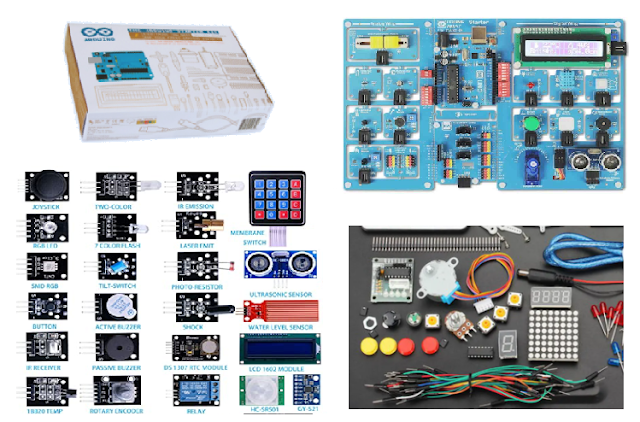Arduino Kits for beginners electronics projects
Arduino kits are very simple to learn and widely used in electronic projects. You can make your own projects in a few minutes. Making a circuit on a PCB is a hard job, and it requires excellent skills in soldering. Also, it consumes a lot of time. Assembling components is another problem.
But electronic portable kits solve the issue. You can gain knowledge from Arduino starter kits on Amazon. It includes project books and different varieties of sensor modules. We directly connect on the breadboard and reconnect in a few steps.
Arduino Uno Starter Kit (official)
The official starter kit is from the original manufacturer. This is a complete package, including the Arduino Uno kit Manual. This manual has practical images and schematic diagrams to understand well.
The manual covers not only project-making areas; but also information about Arduino IDE software installation on Windows/macOS X and Linux.
Every Project/lesson comprises example codes. So read and build your own project. It also contains a wooden base, electronic sensors, a manual book, etc. as given below.
Every Project/lesson comprises example codes. So read and build your own project. It also contains a wooden base, electronic sensors, a manual book, etc. as given below.
The Starter Kit Items
Arduino Uno R3 Board- with a wooden base. including 9V battery snap and multi-color Strand jumper wires, Pushbutton, Potentiometer, Multi-colored LEDs & RGB LEDs, Servo motor, DC motor(small) & motor driver (L293D), Diode, Multi-value resistors, MOSFET Transistors, and Arduino sensors.
Sparkfun inventor's kit for projects
This is Spark fun inventor's kit-v 4.1. If you want to learn about programming languages for electronic use, it could be helpful. It is a small Arduino robot kit starting from zero.
The SparkFun Arduino kit for adults has a red board compatible with Arduino IDE. It has an instruction manual including a kit material Box. The Sparkfun Kit comprises 16 interesting projects for newbies and for experts.
The manual, including the kit, is full of many interesting projects of lights, sounds, motion, and also the LCD display. You can assemble the kit and make robotic car projects.
Inventor's Parts
Sparkfun Red Board (Arduino Uno compatible), Motor Driving board, Ultrasonic Sensor
for Distance, solderless Breadboard, 16x2 LCD, LEDs, and many more. SparkFun Inventor's Kit manual and A Small Box. mini screwdriver is included in the kit.
Grove starter Kit
The Grove starter kit has an Arduino-compatible board from Seeeduino Lotus and is based on the Atmega 320P microcontroller. The advantage of the kit is that you don't require any breadboard or jumper wires.
Grove starter kit is not the same as other starter kits, it is all in one kit. It contains 10 additional Grove Arduino sensors. The Starter kit with tutorials of 70 pages, including 12 step-by-step tutorials for your projects.
The Grove starter kit is compatible with over 300 different pre-wired sensors.
This is an Arduino UNO basic starter kit for students and hobbyists. If you want to learn how to start with an Arduino board and assemble projects with basic knowledge.
For Arduino starter projects, the kit contains general items. GEEKCREIT upgraded the kit version. It has sensors and actuators for creating complex projects.
This is a cheap kit with a carton box from Banggood. But it's working fine as I already use that one.
Arduino Kits for Projects
The kit contains 50 different electronic components and over 180 components for advanced users. You can make and program security and monitoring-type projects for your home and your offices.
No need for any soldering, just add components to the Breadboard and make it ready for testing.
It includes a resistance color code card with the Arduino kit to find the resistor value. With the joystick and LCD/LED display, you can prepare a games program.






